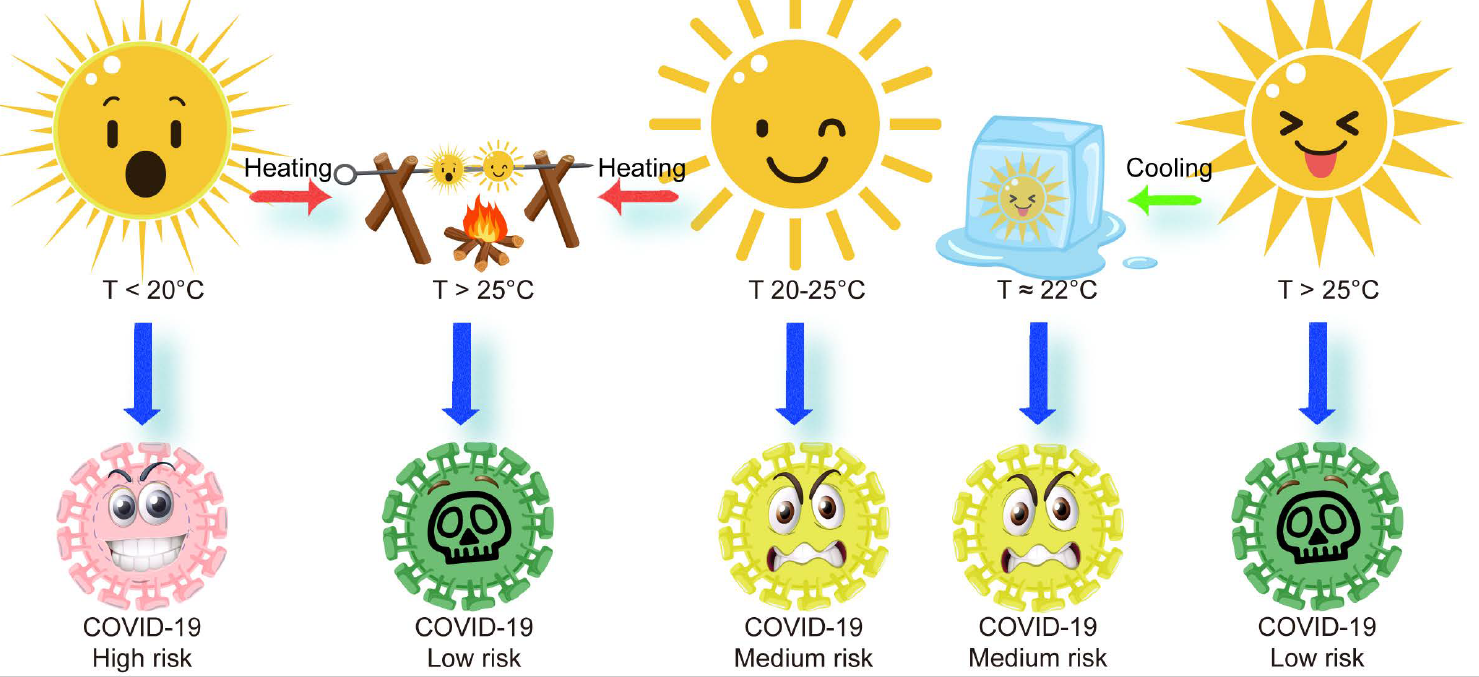COVID-19 is a pandemic with no cure. There is an urgent need for low-cost interventions. Macroclimate work through affecting microclimate. In many situations, man-made microclimate, such as air conditioning, may override the effect of natural macroclimate in determining SARS-CoV-2 pathogenicity. Ambient temperature (AT) has been roughly associated to SARS-CoV-2 transmission. To translate into a feasible practice in controlling COVID-19 pandemic, in-depth and implementable knowledge of AT role in SARS-CoV-2 transmission should be unveiled. This study aimed to determine if there is a ‘safe’ temperature that is comfortable to human beings while significantly inhibitory for SARS-CoV-2 pathogenicity. Data on monthly new deaths or new cases per million population (MDPM or MCPM) and monthly cumulated days with more cases than the previous day (DI) from March 2 to June 30, 2020 were collected from all 118 countries with population over five million. Monthly average AT negatively correlated with the transmission parameters. A significant decrease in transmission was observed when AT reached above 20 ºC. Monthly average (not average high) AT of countries with MDPM <2, MCPM<10, or DI<=7 was found to be between 24.54 and 26.89 ºC (25.18 ºC on average) with average standard error of 4.81. Thus, average AT <20, 20-25, >25 ºC were considered as high, medium, and low risk AT. Furthermore, MDPM in countries with AT <20 ºC were 80.93, 50.23, 13.52, and 5.05 times of those in countries with AT >25 ºC in March, April, May, and June, respectively. MDPM low-risk rates (<2) in countries with AT >25 ºC were 100, 83.33, 52.73, and 52.46%, respectively. In countries with AT <20 ºC, the trends were opposite. Setting indoor temperature to 25 ºC could decrease the need of social distancing for containing SARS-CoV-2 transmission. Ventilation and sanitizing the air with ultraviolet light in nonbusiness hours may be additionally effective. Cooling indoor temperature too low may be a reason of COVID-19 outbreak in some high AT countries. Authorities and the general population can evaluate COVID-19 risk level and manipulate microclimate to reduce the risk anywhere anytime based on local day average AT.

